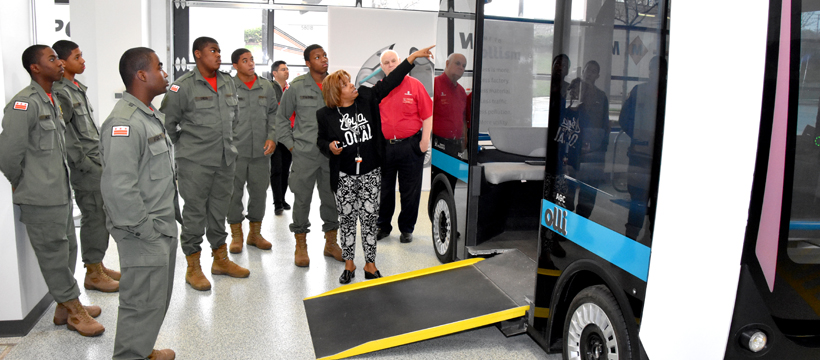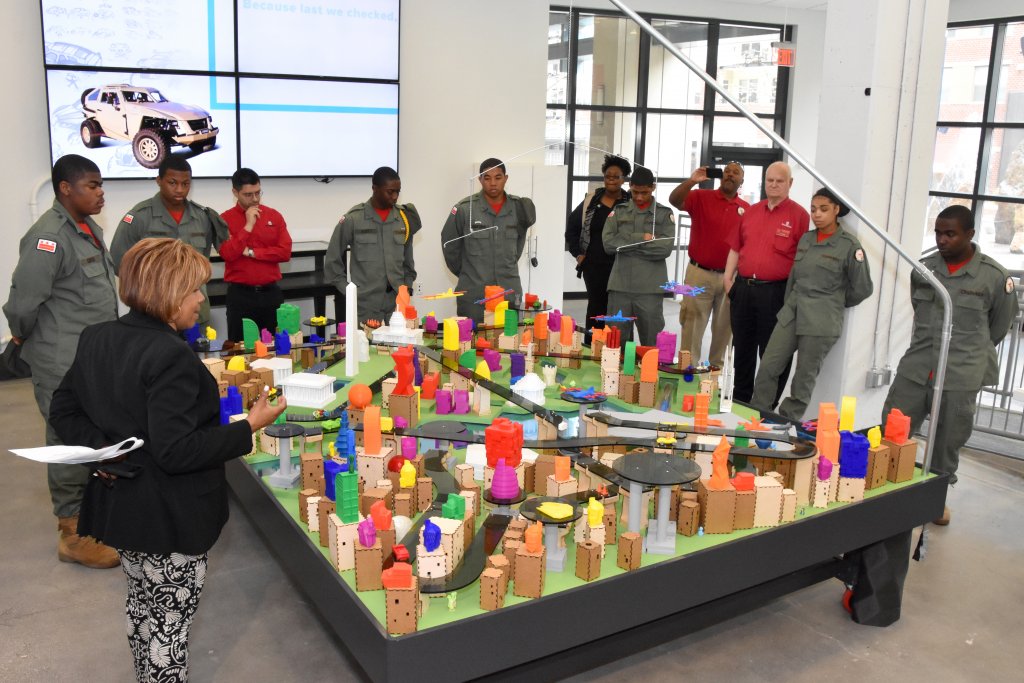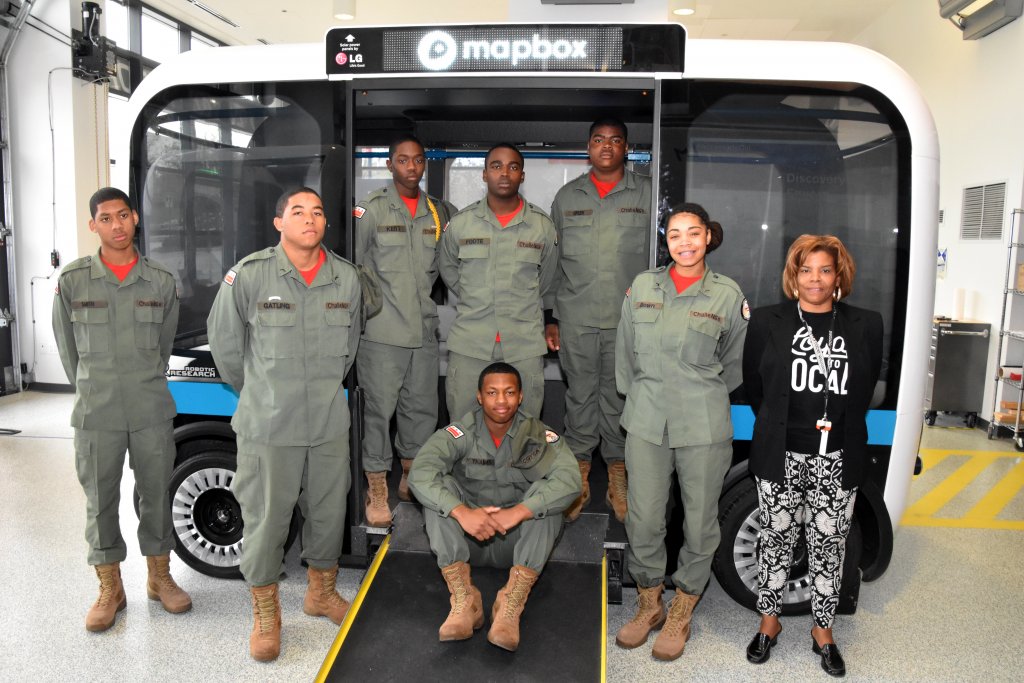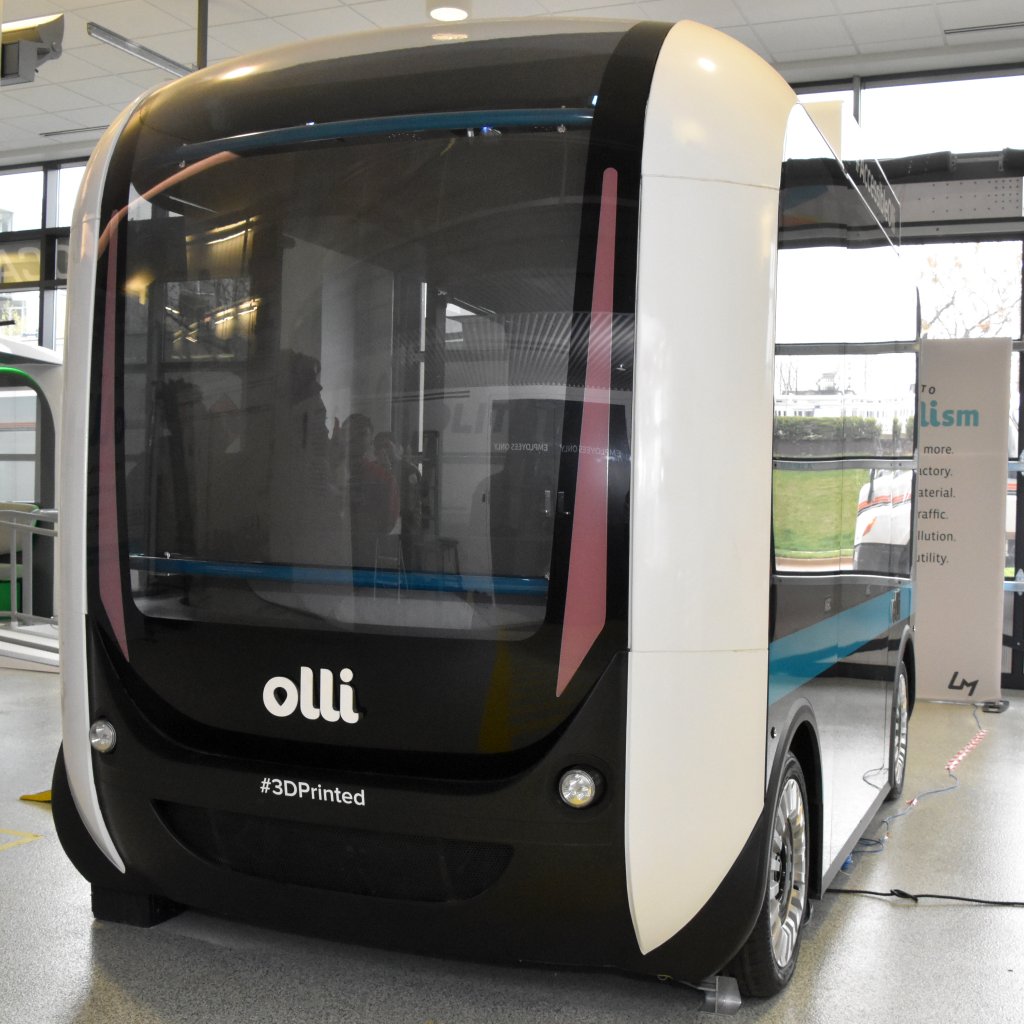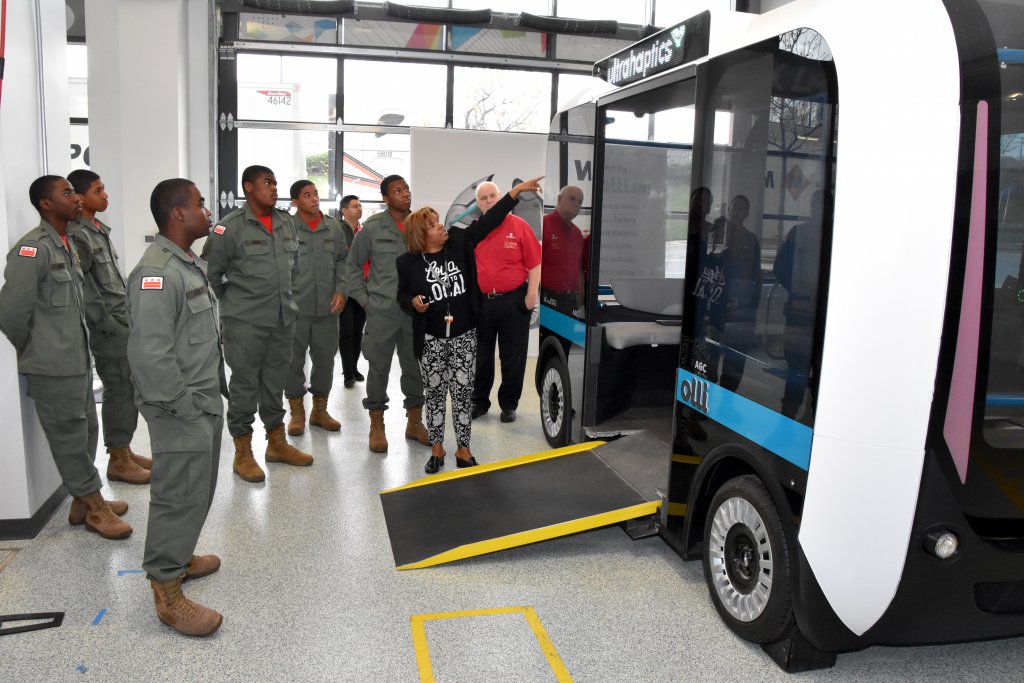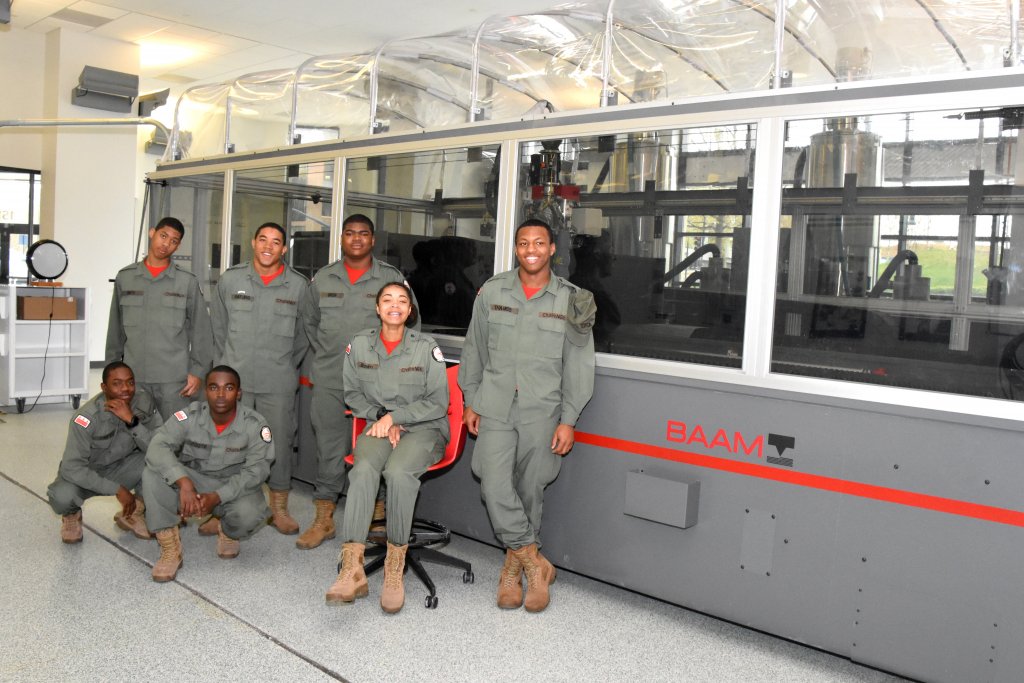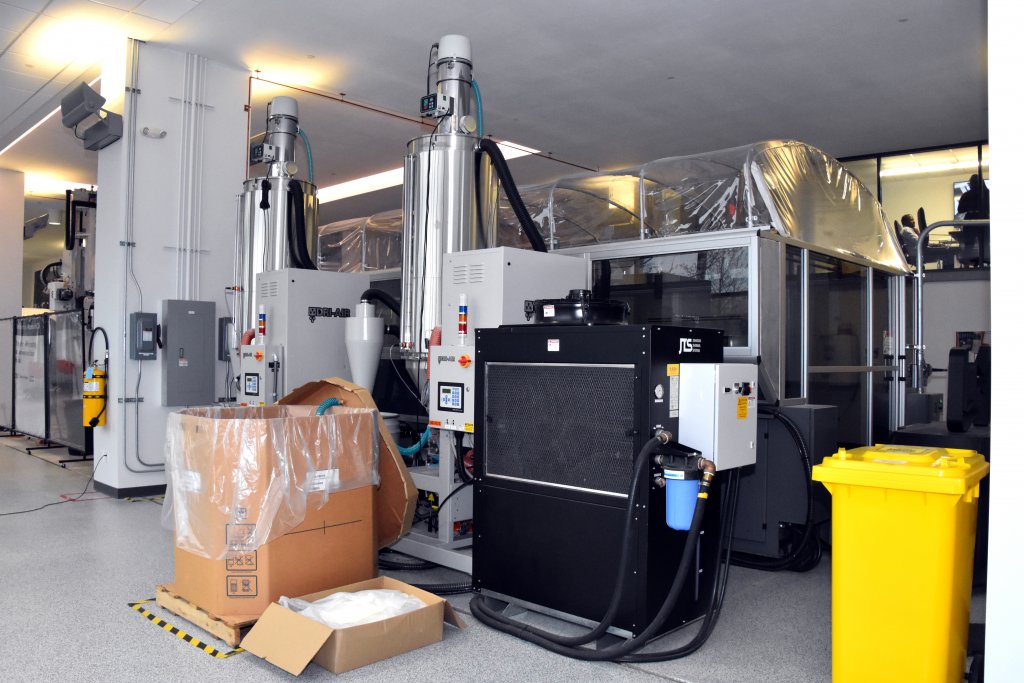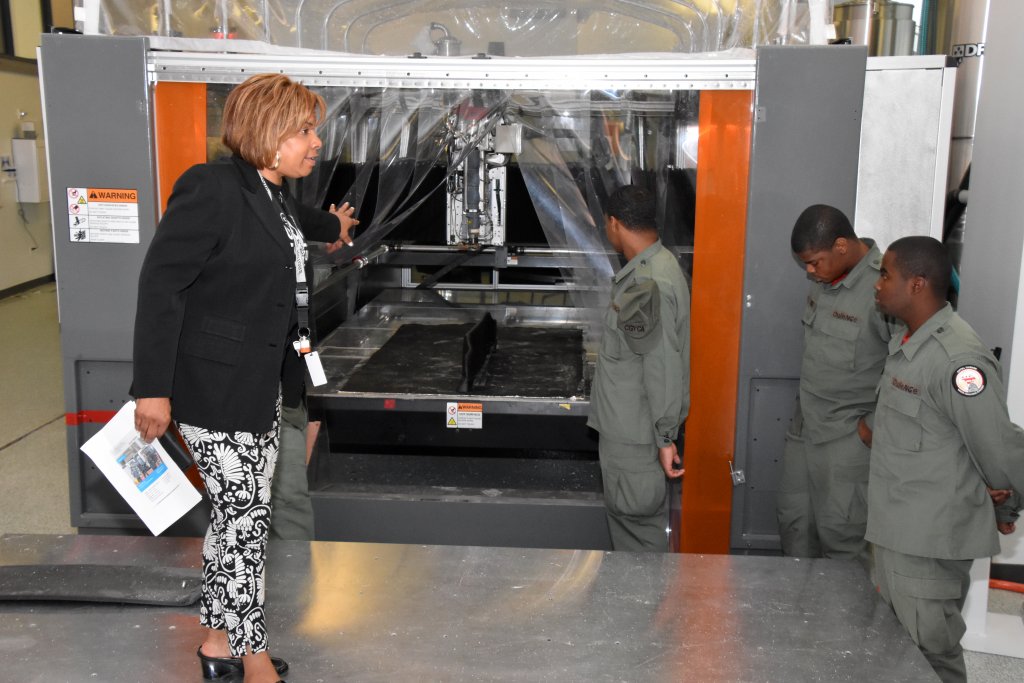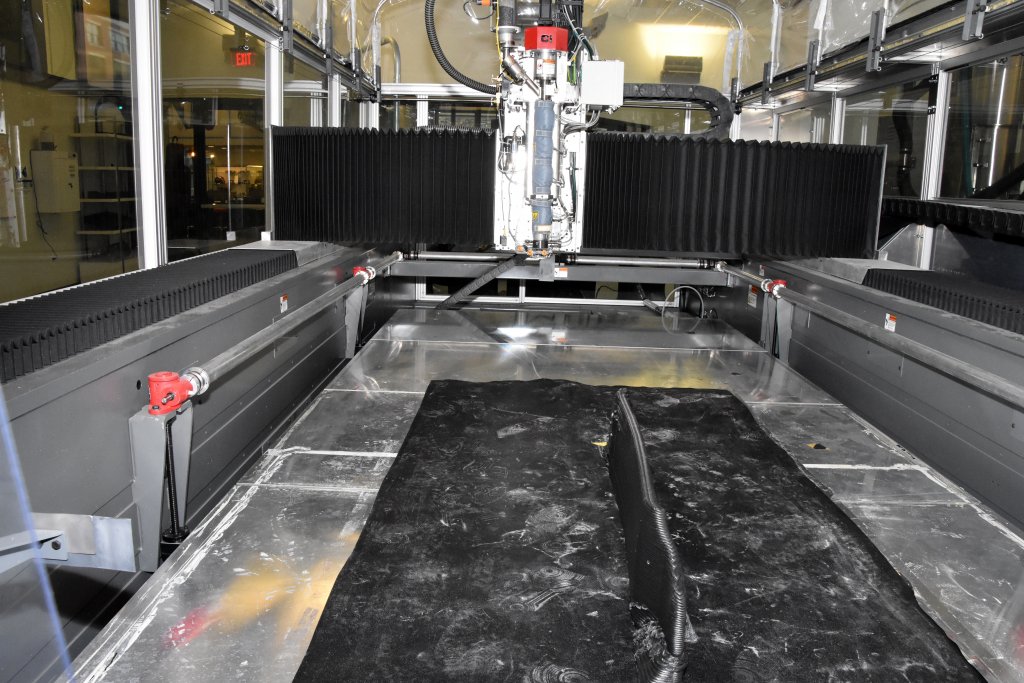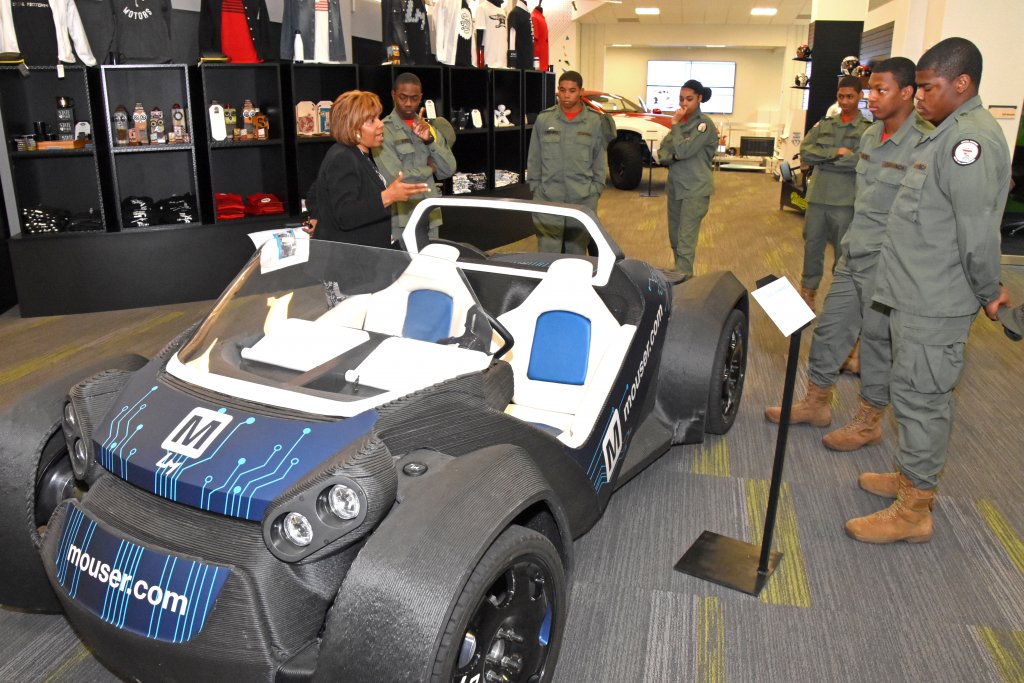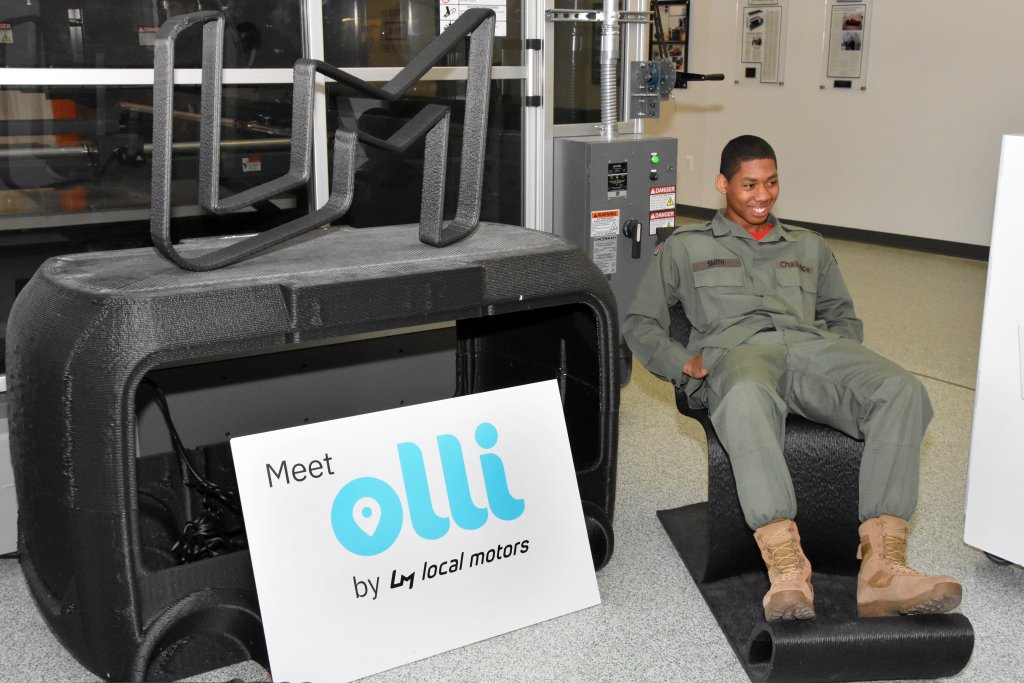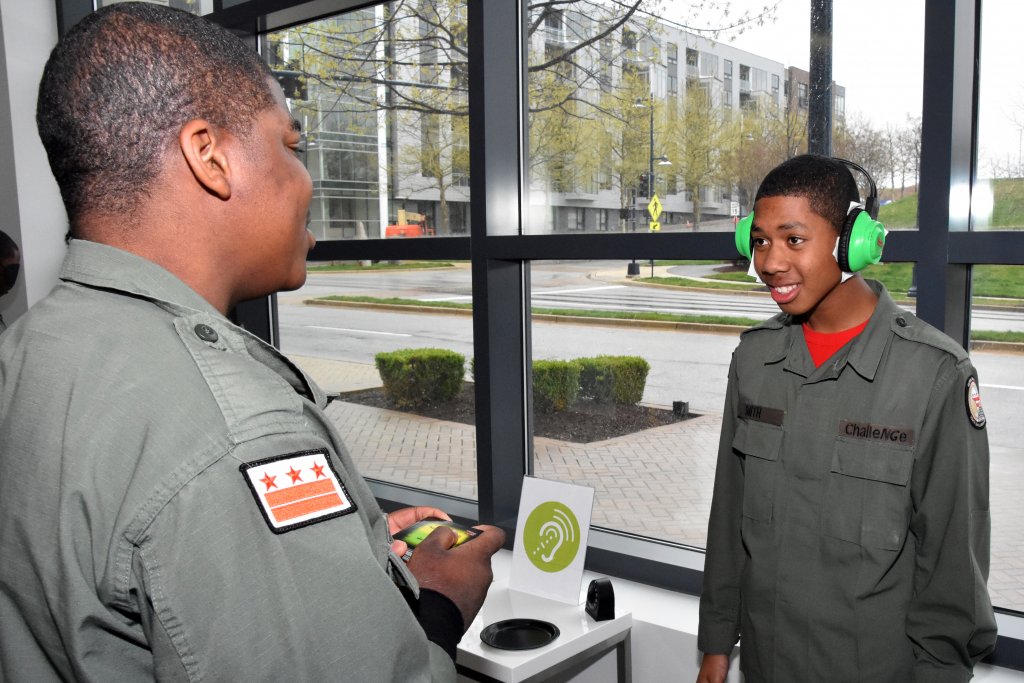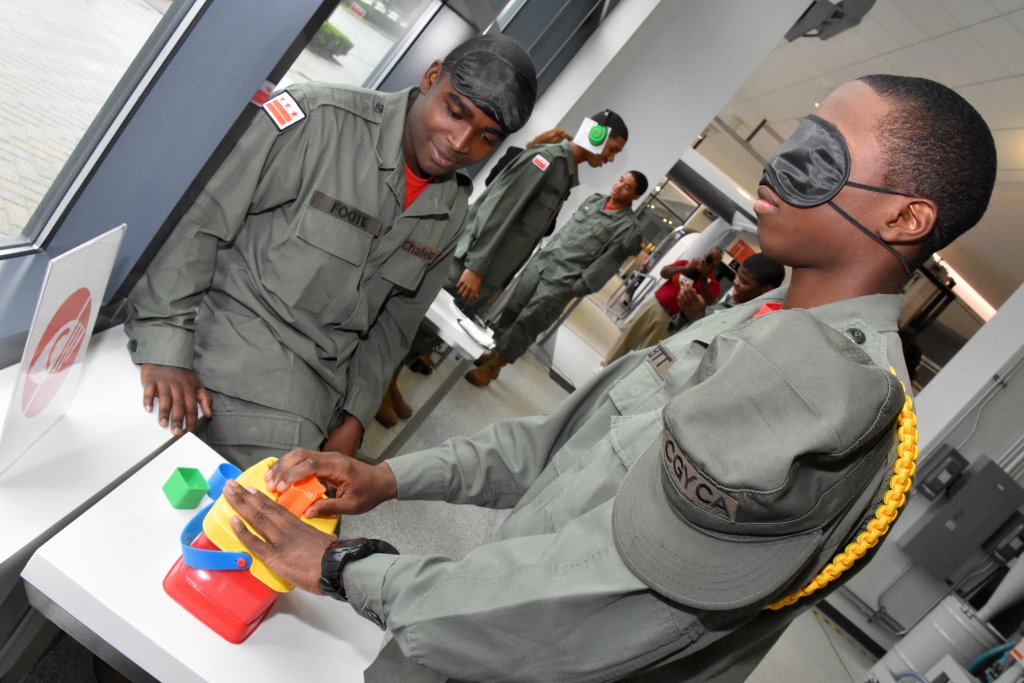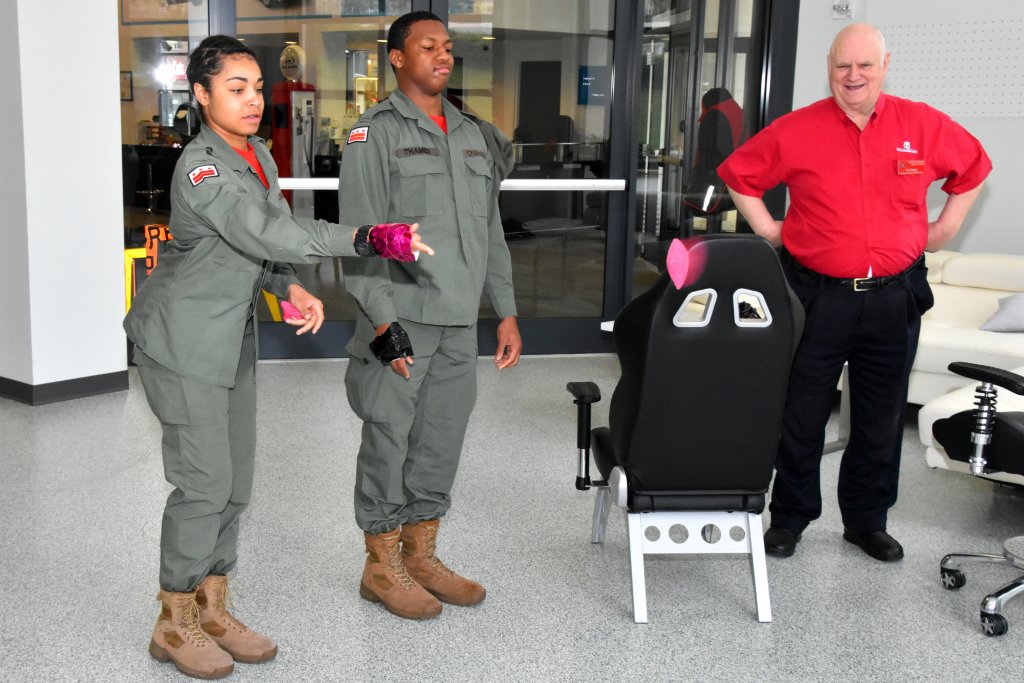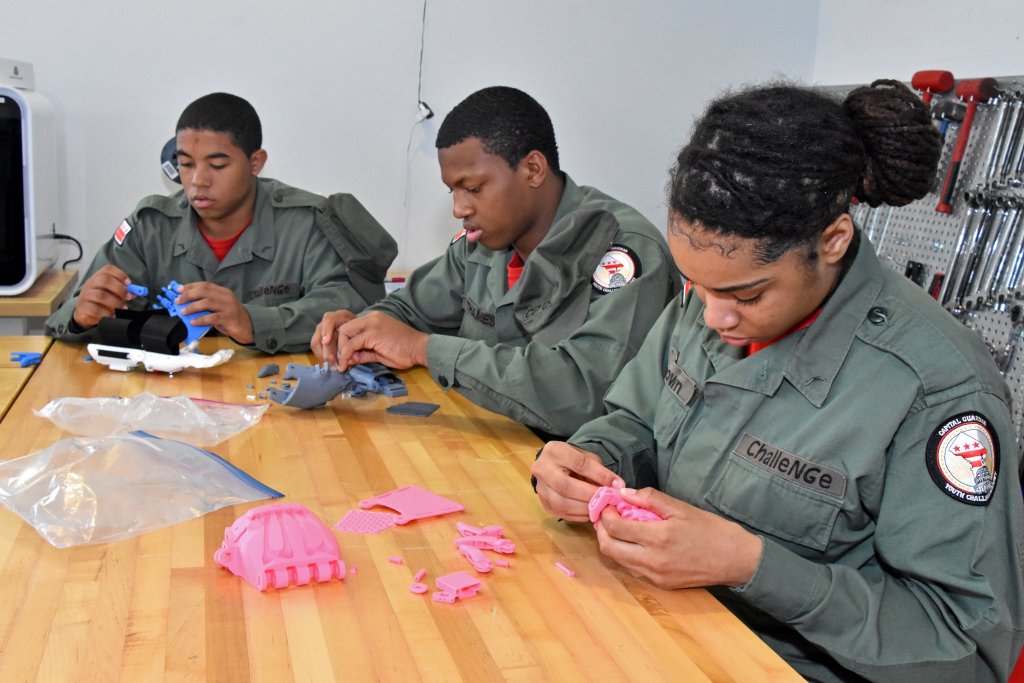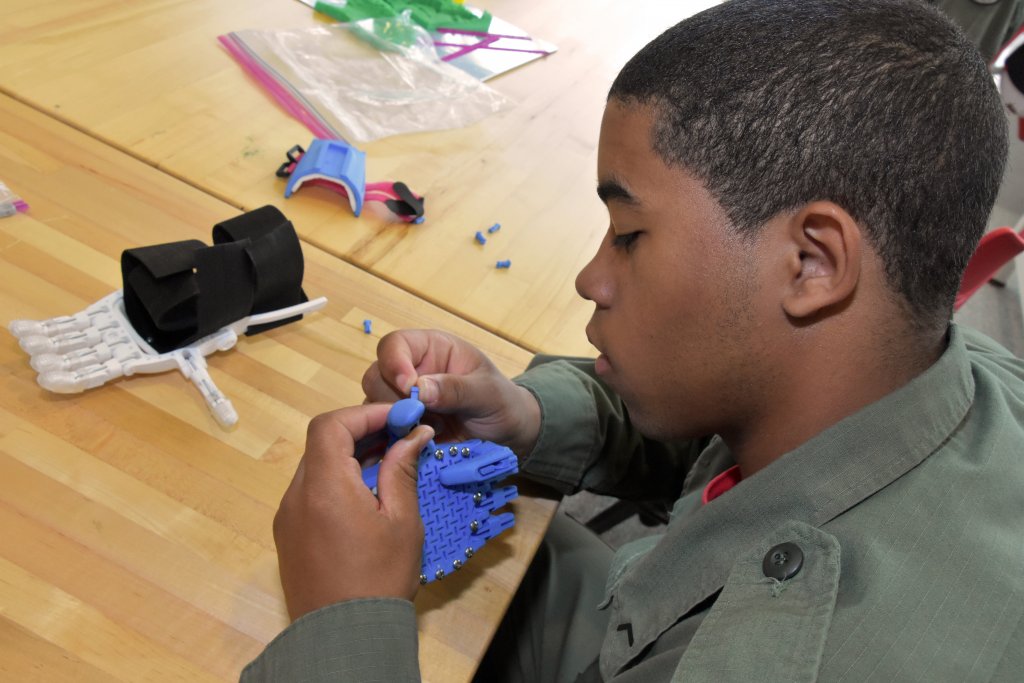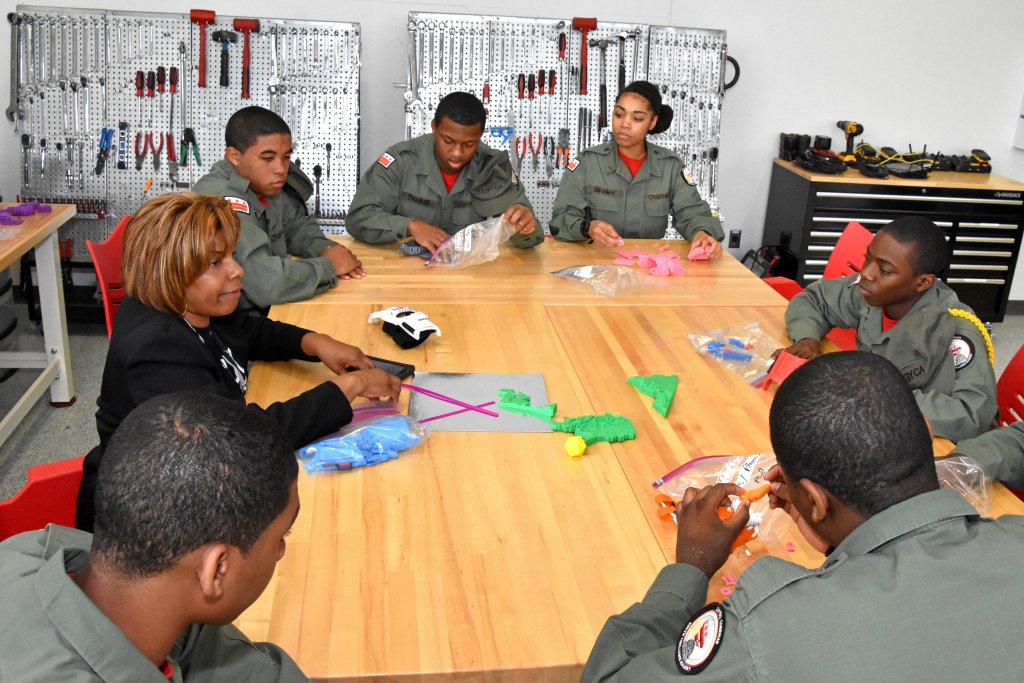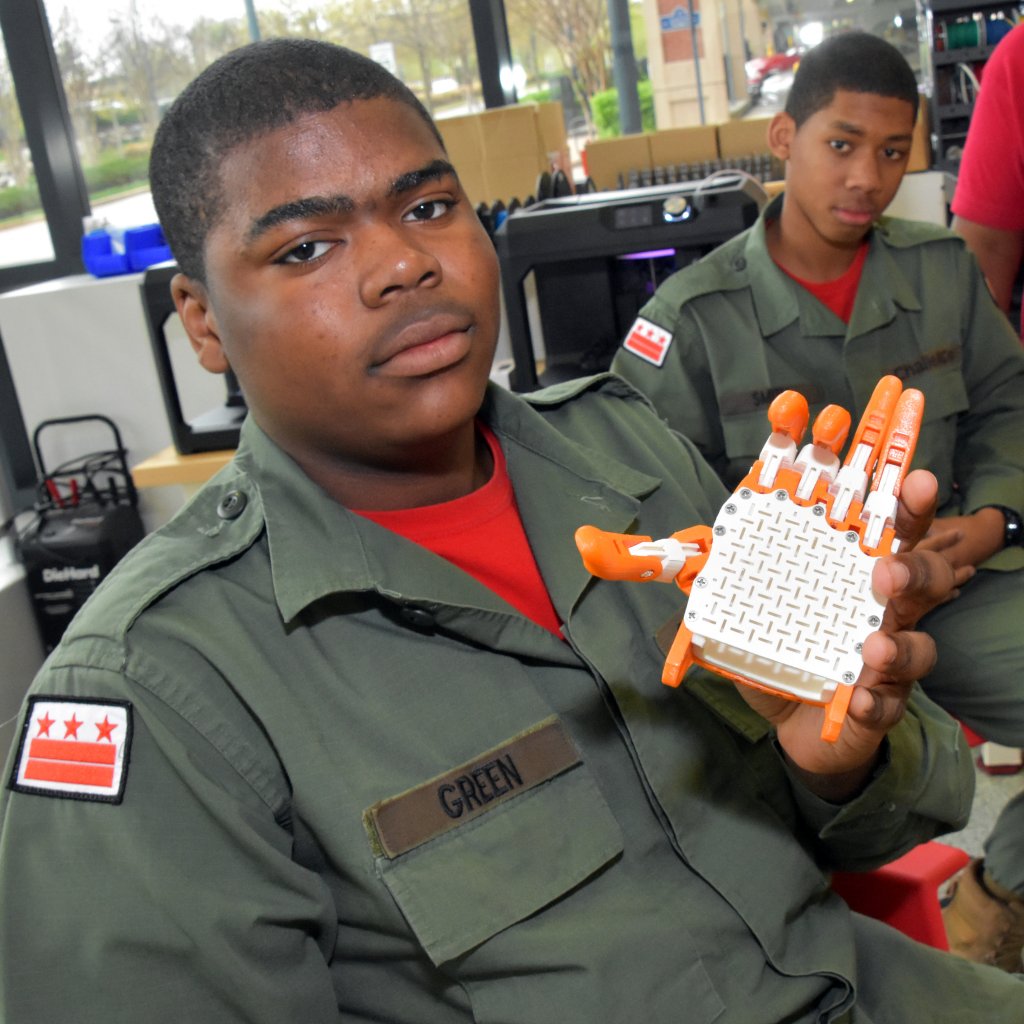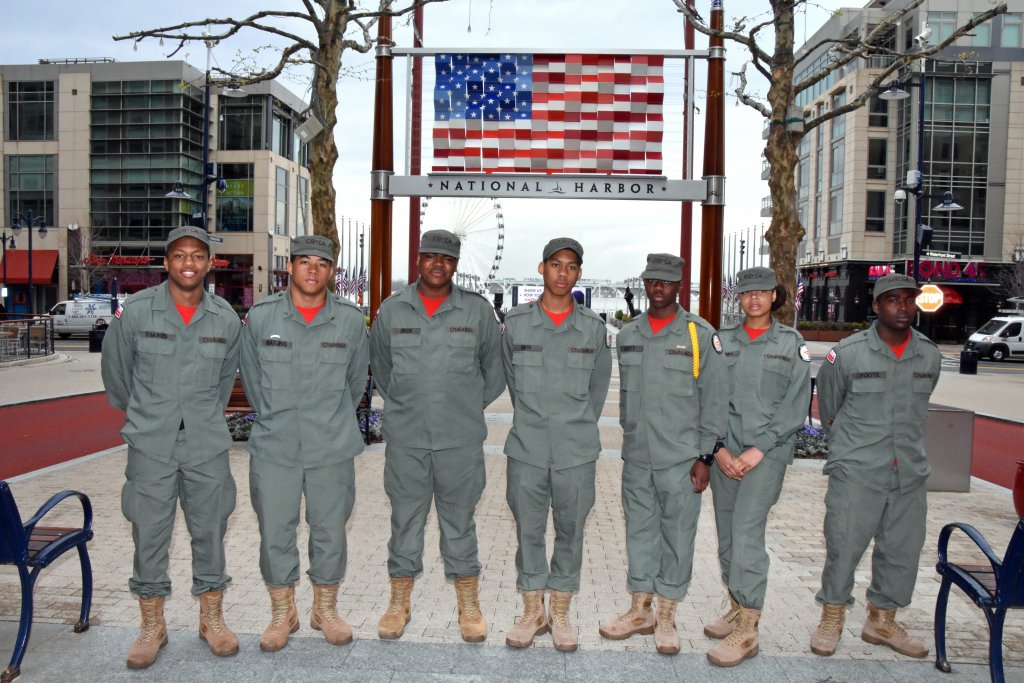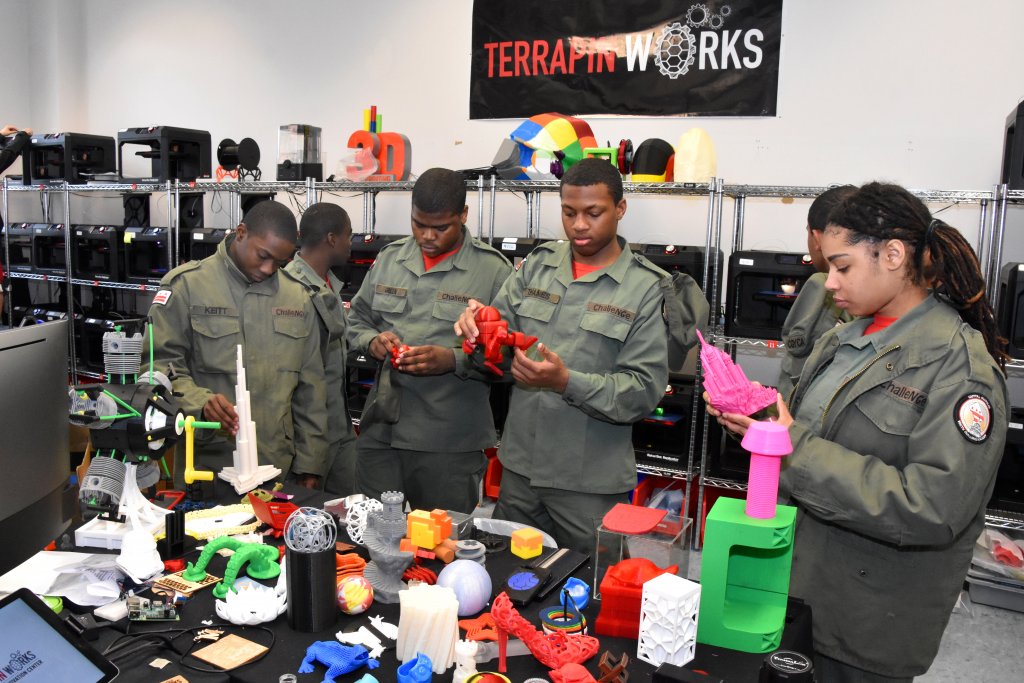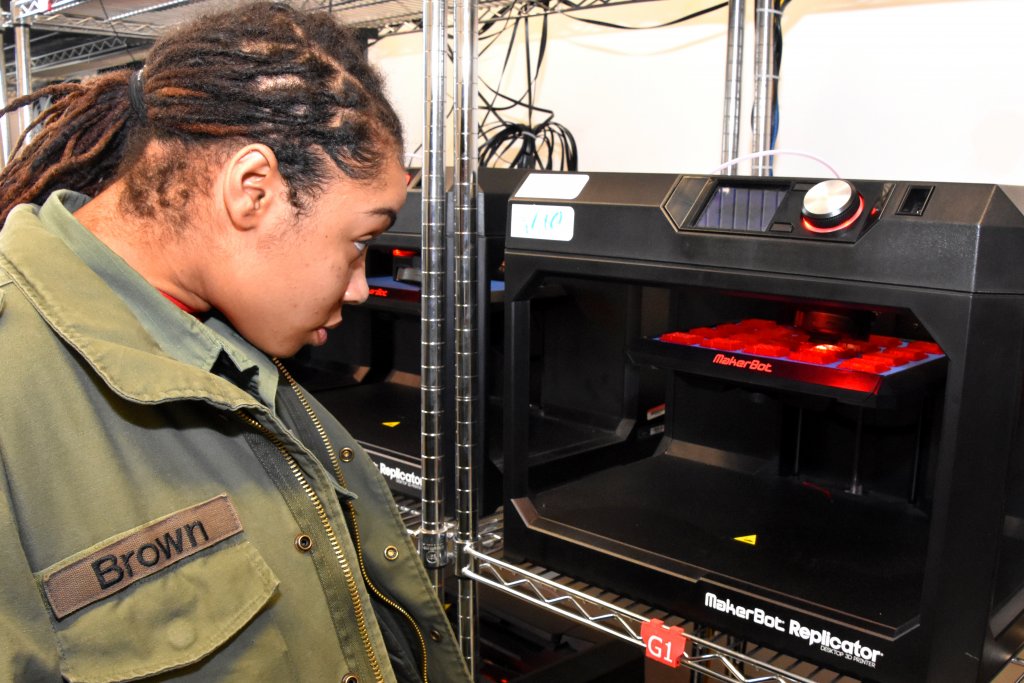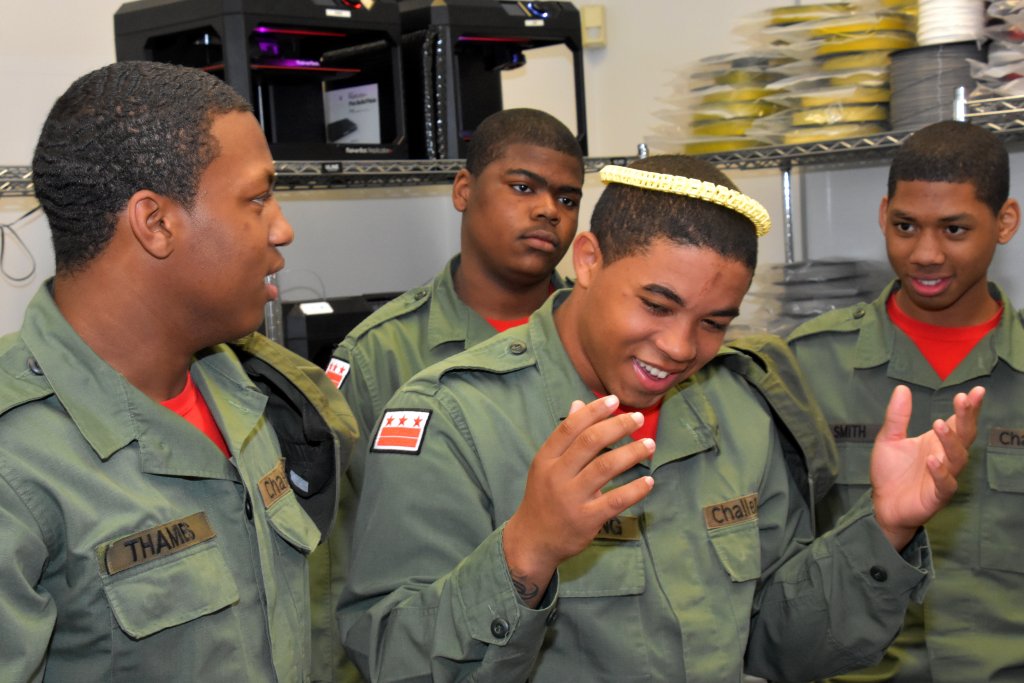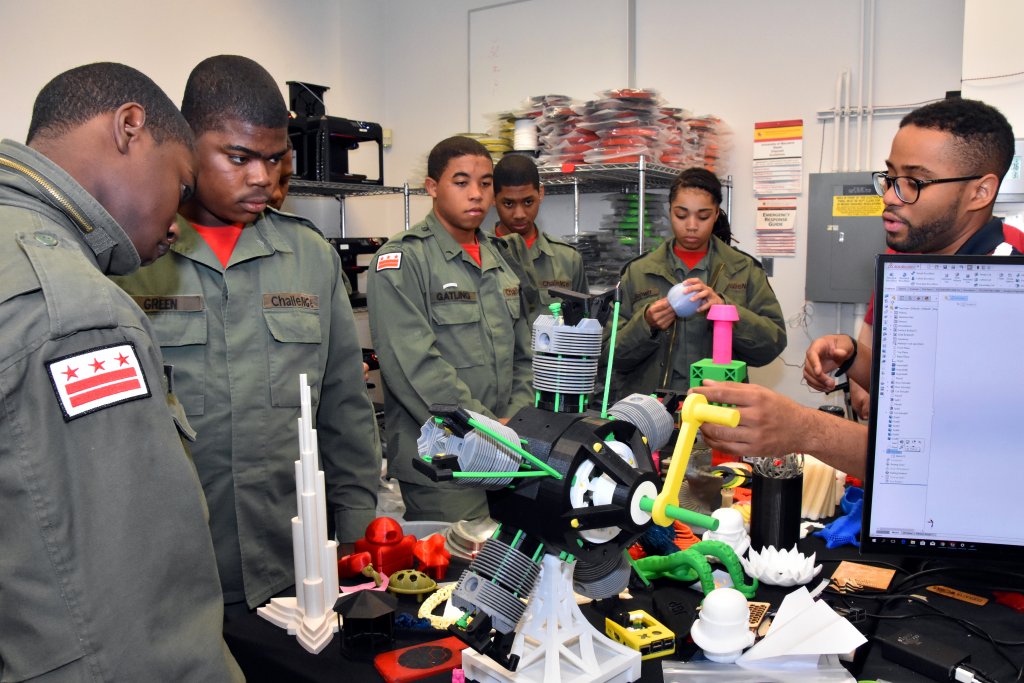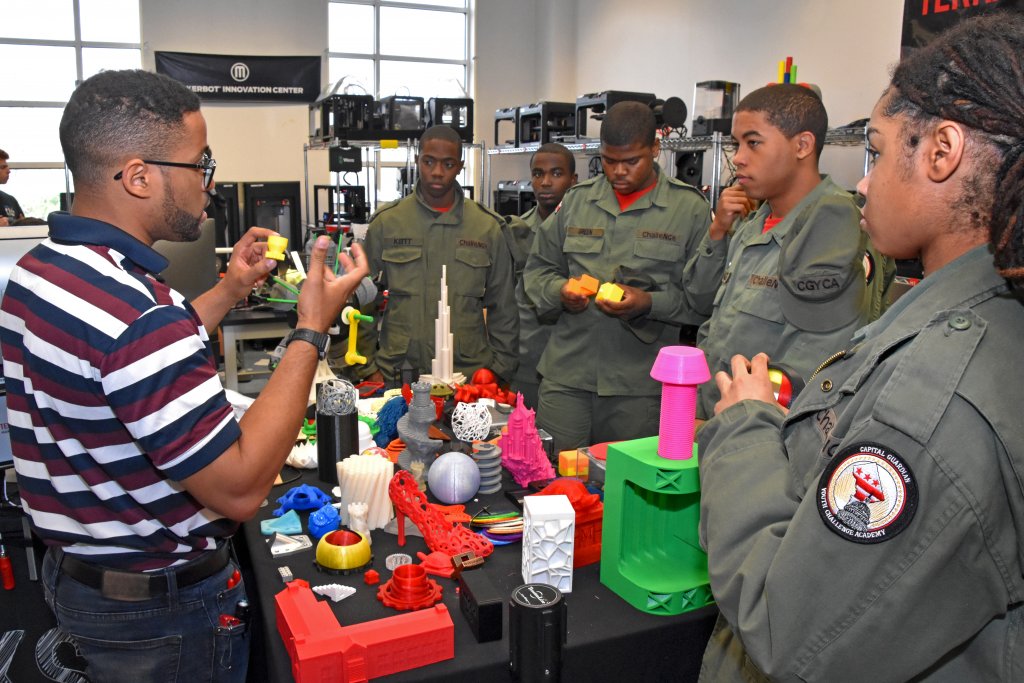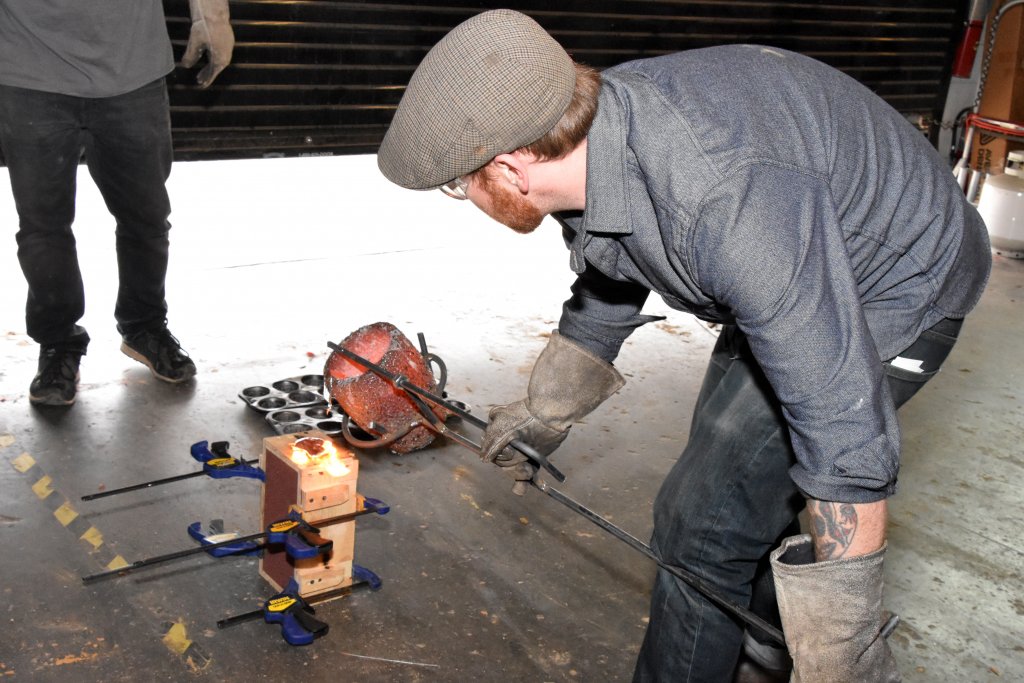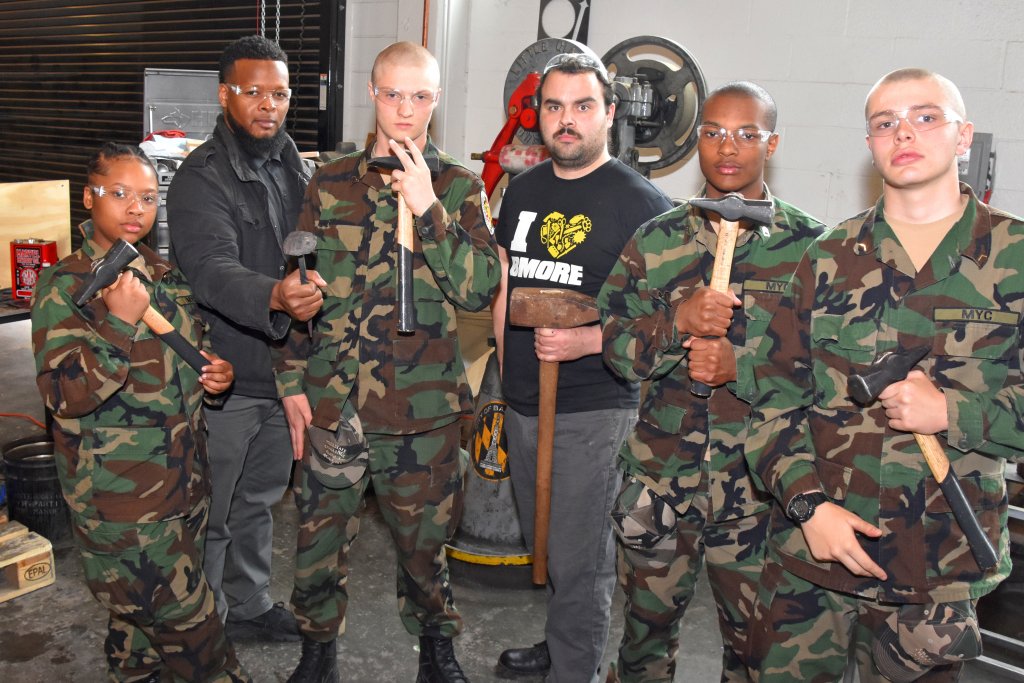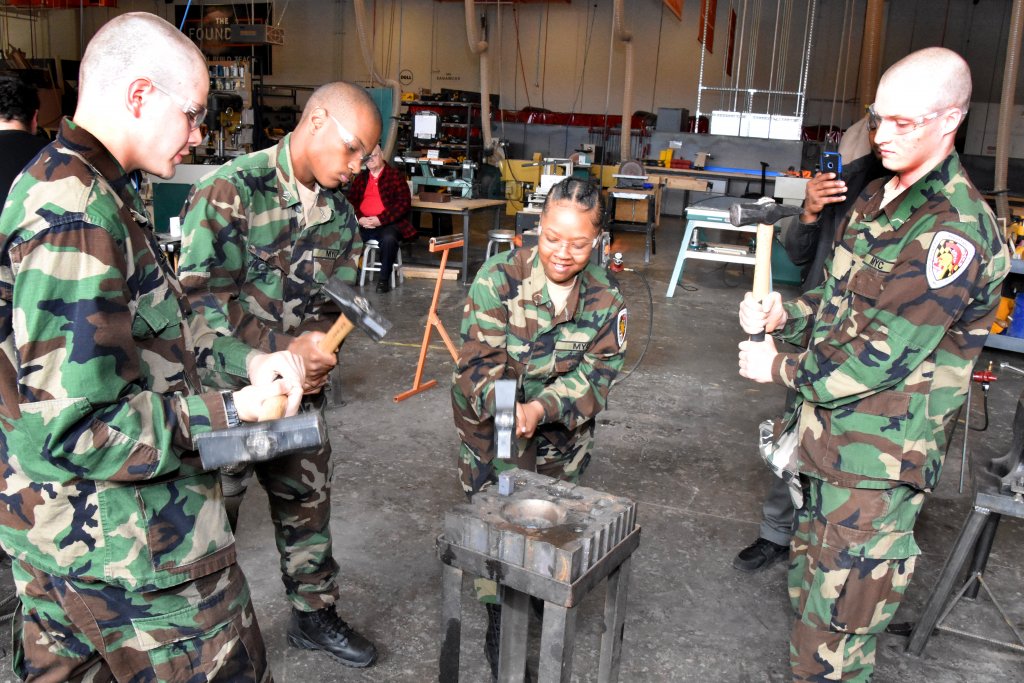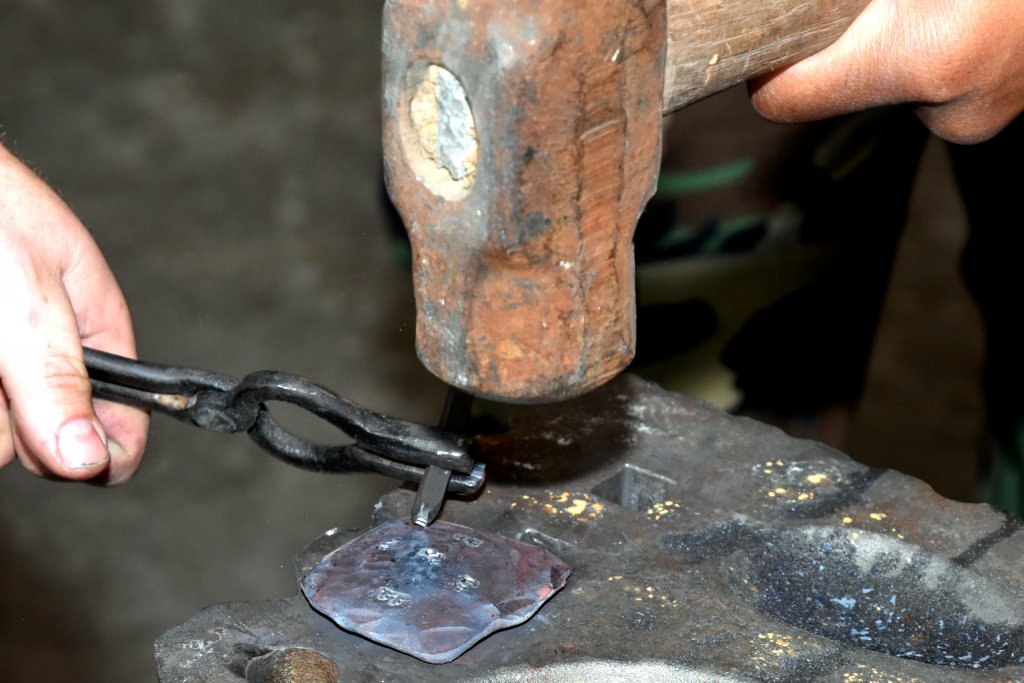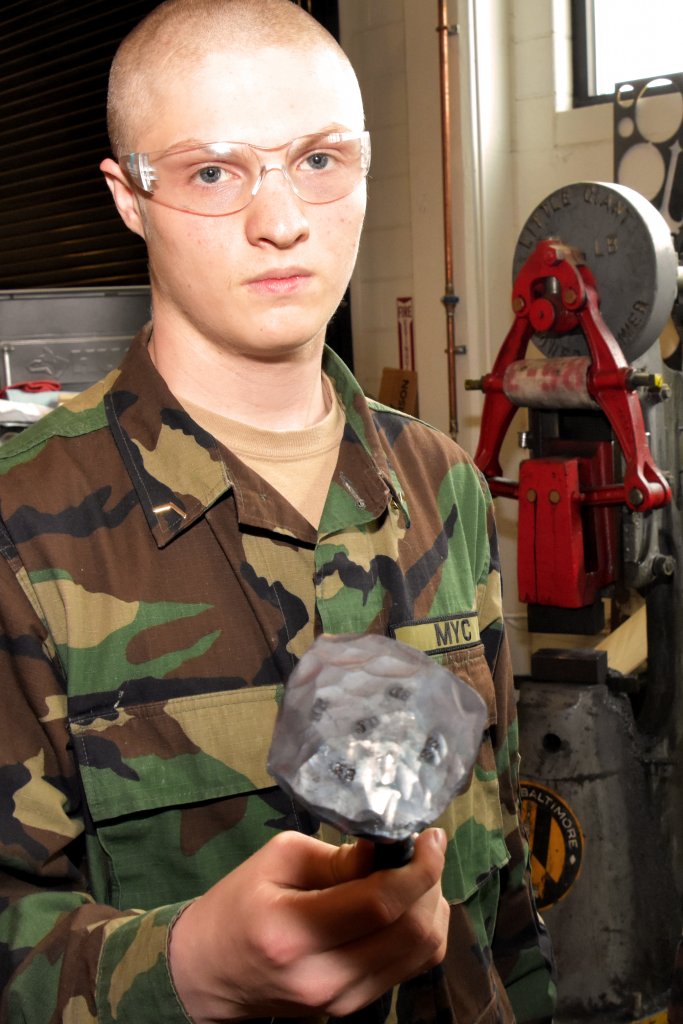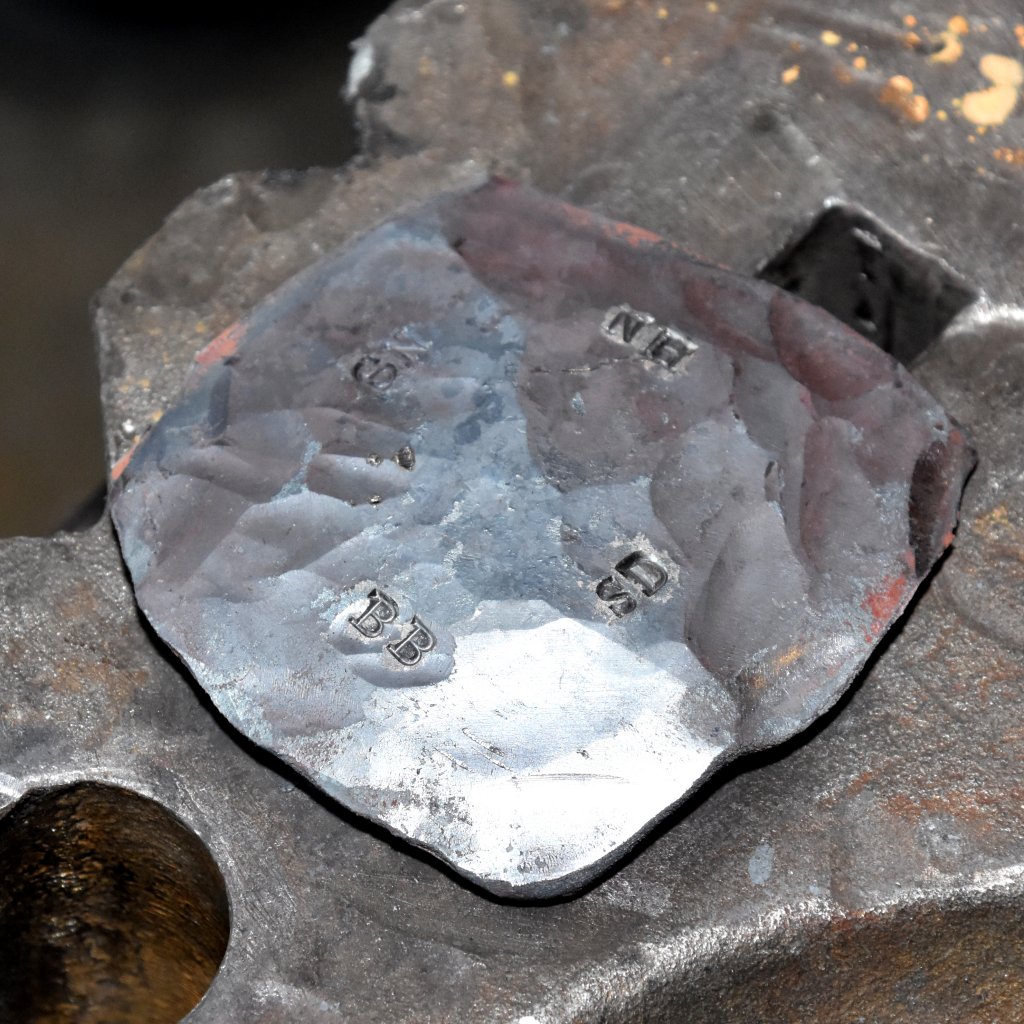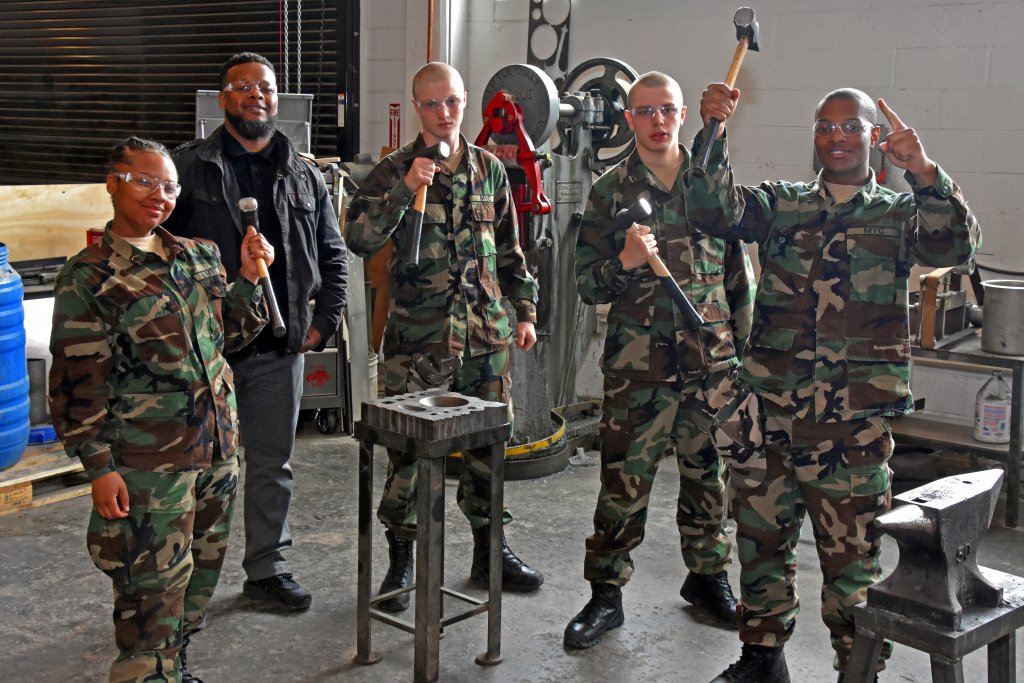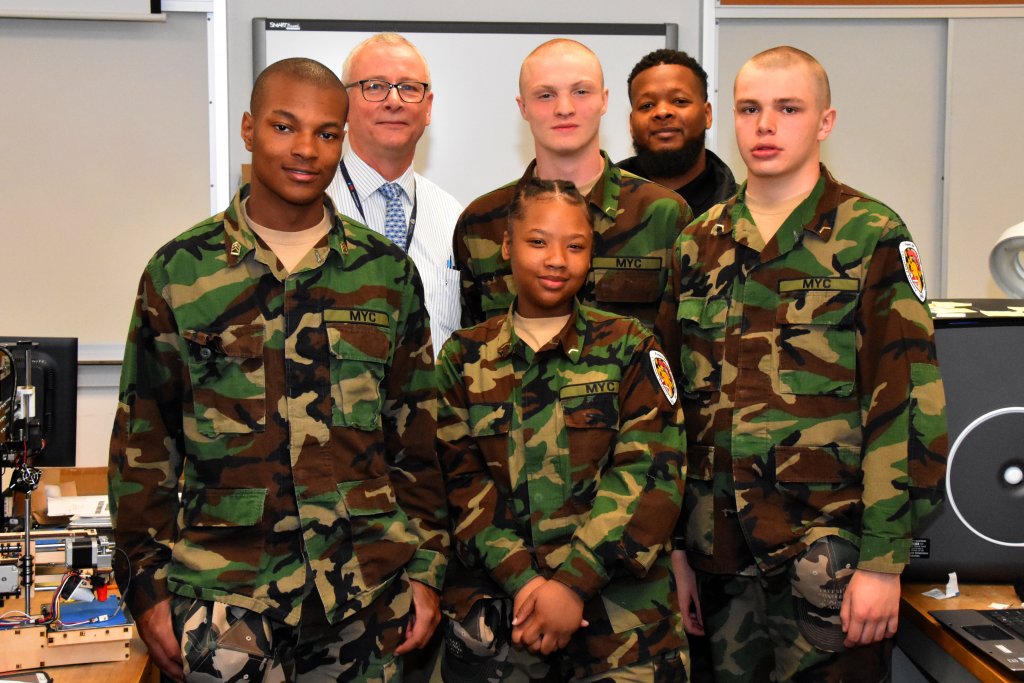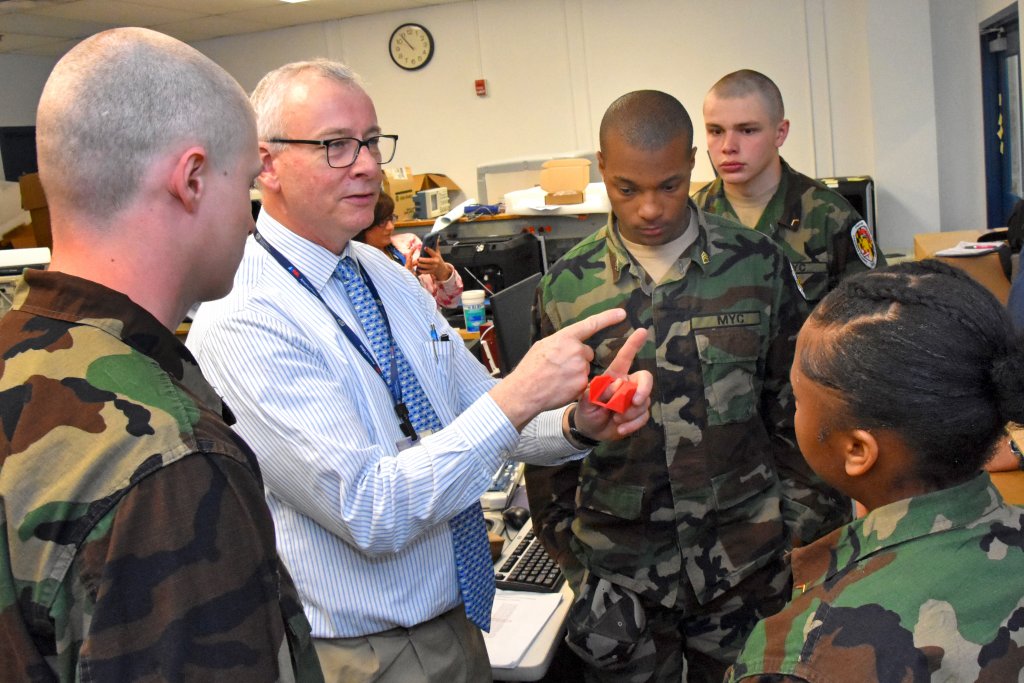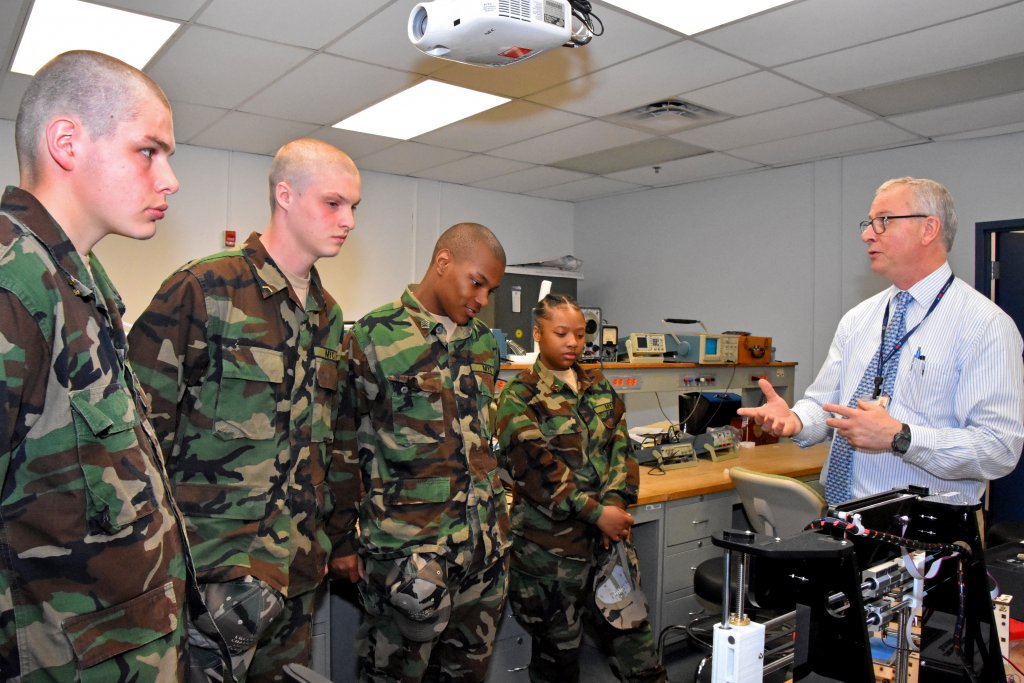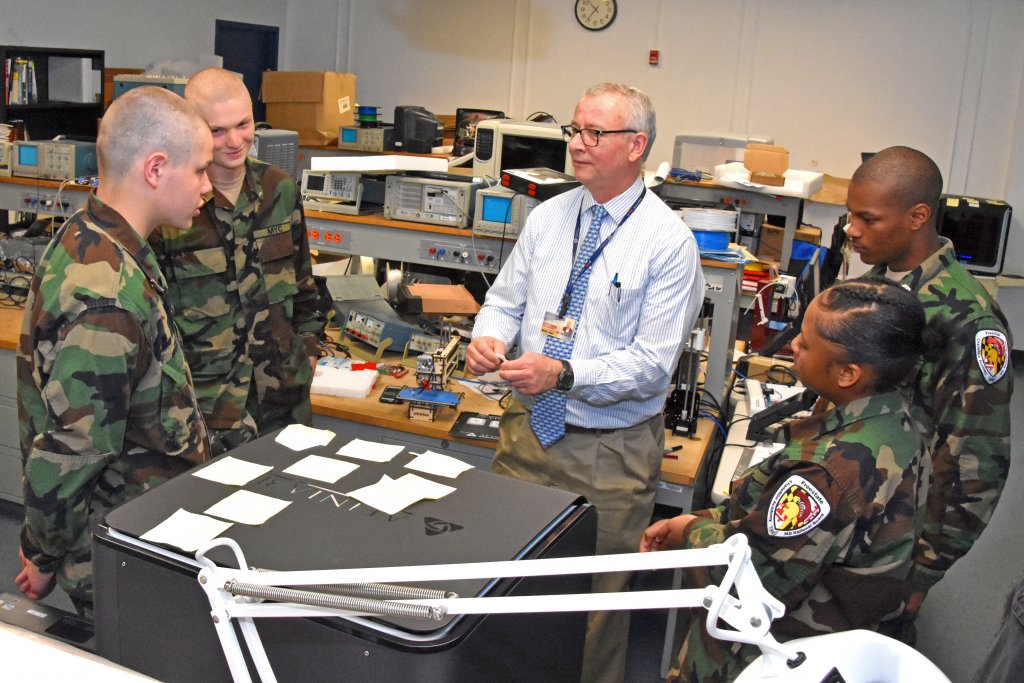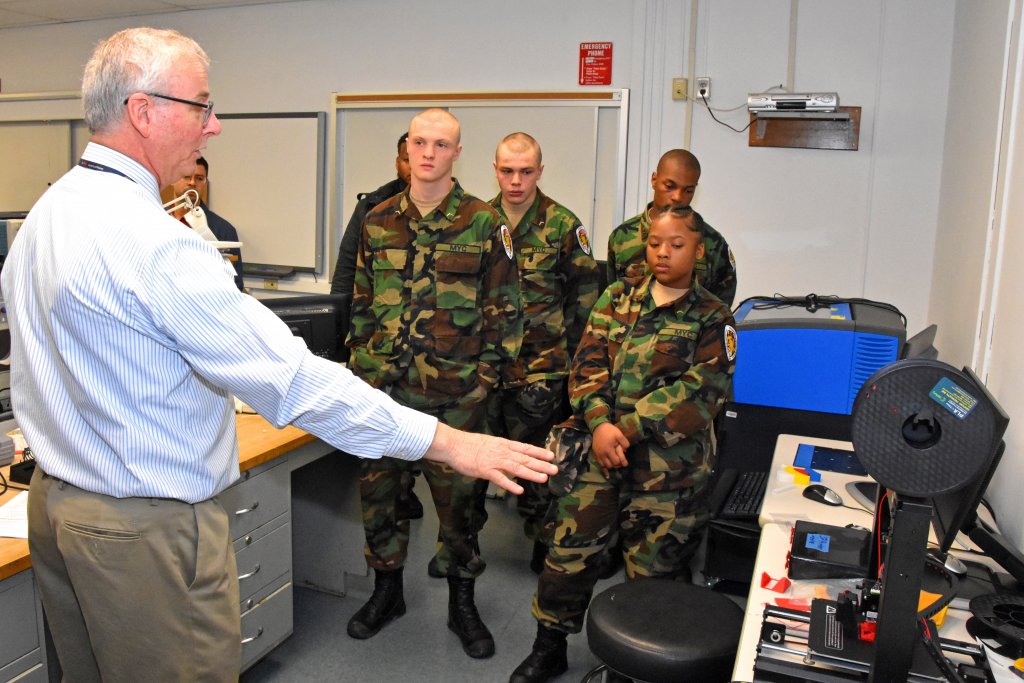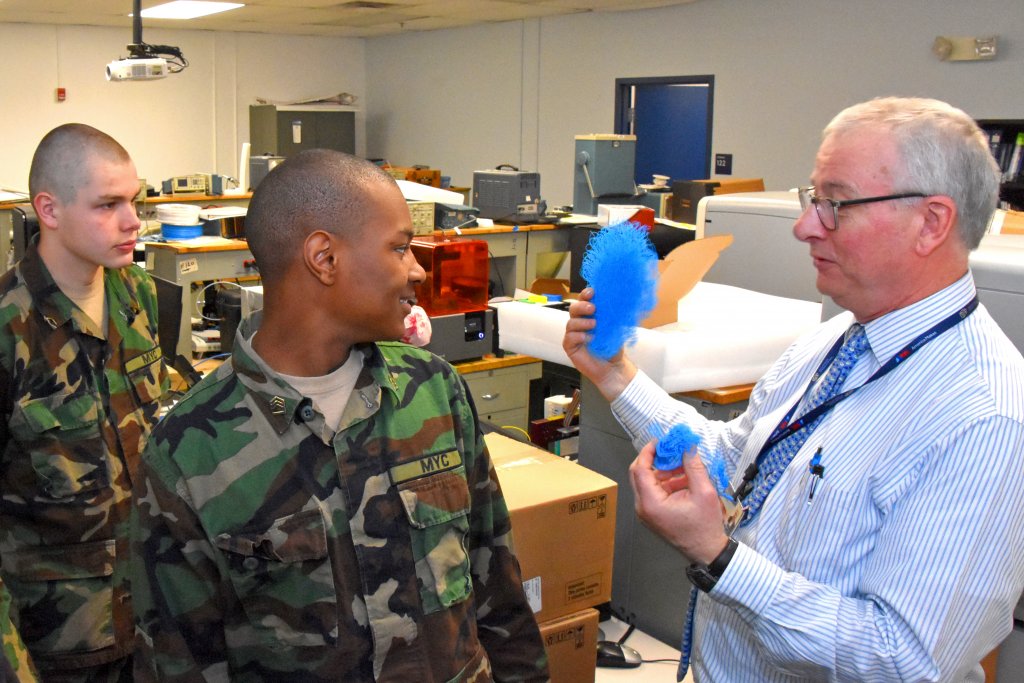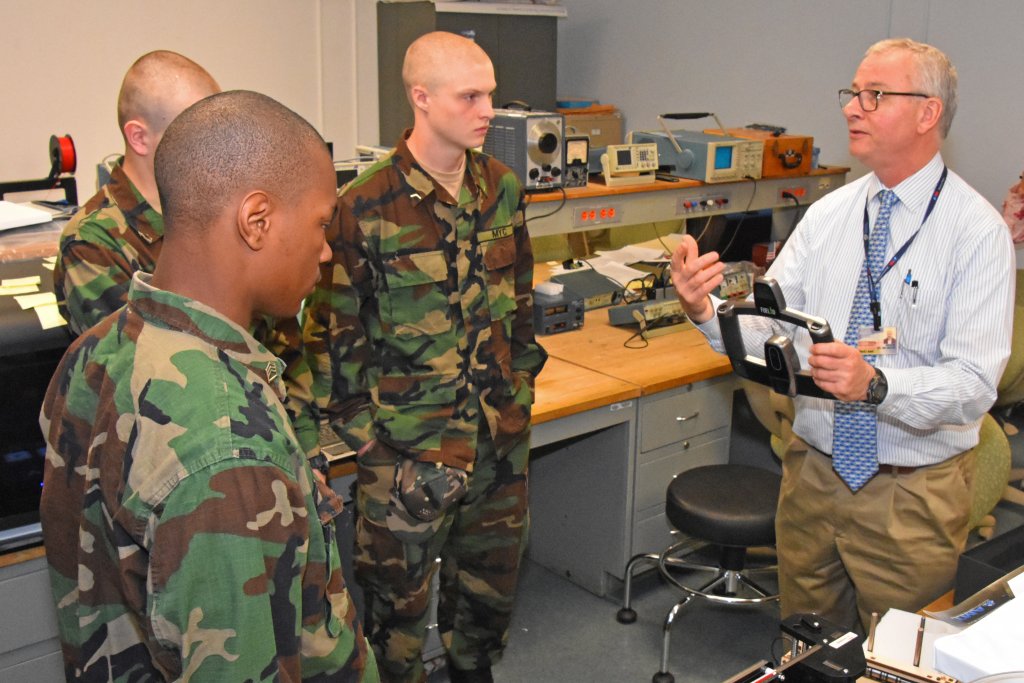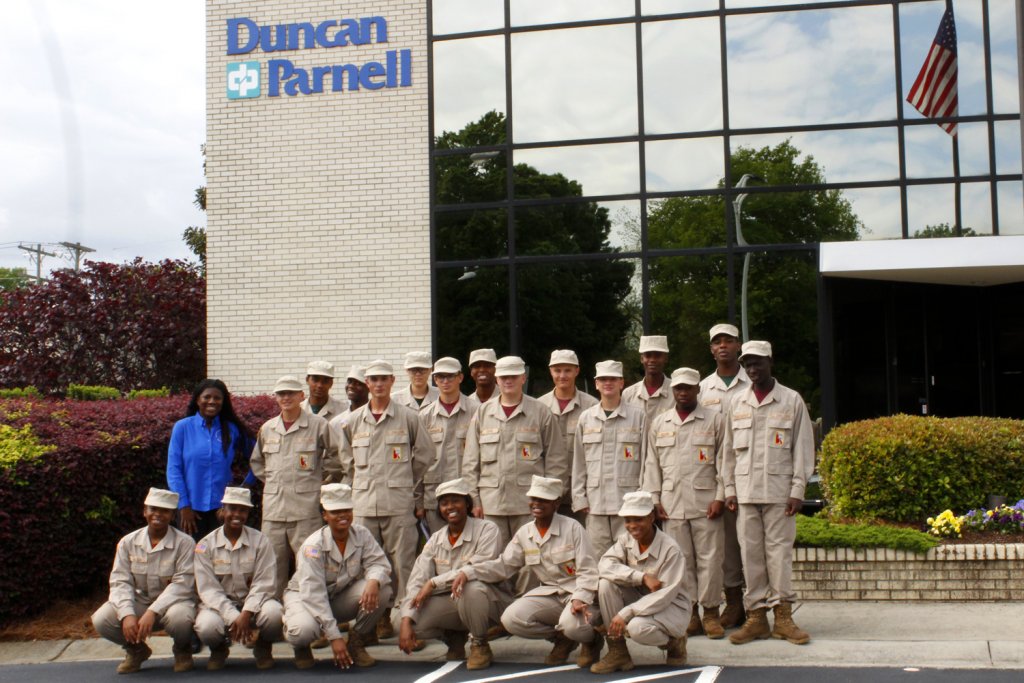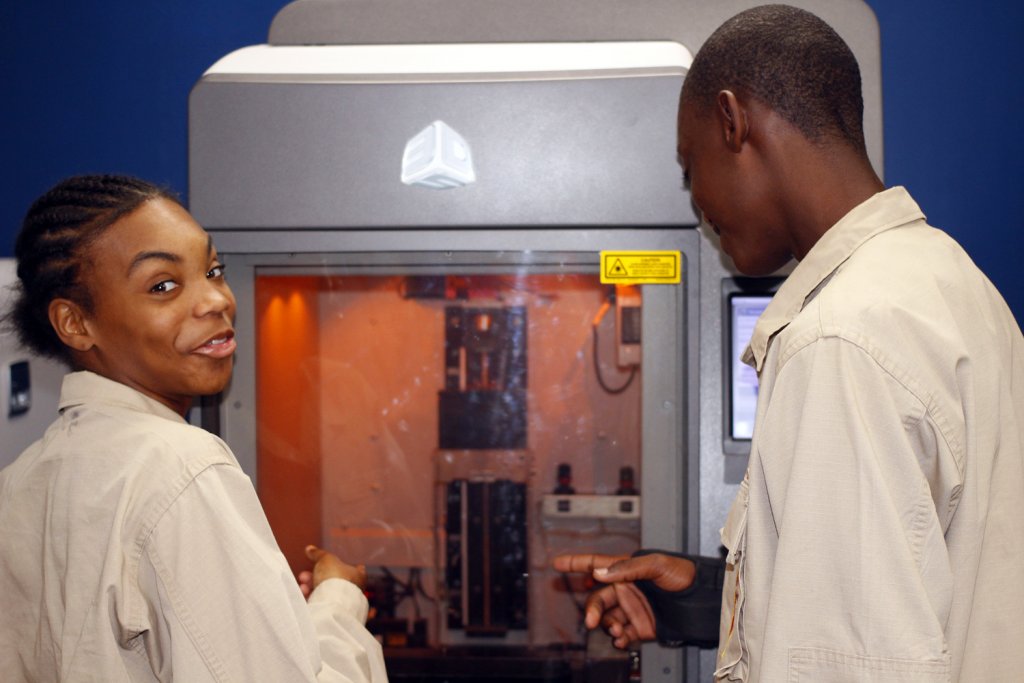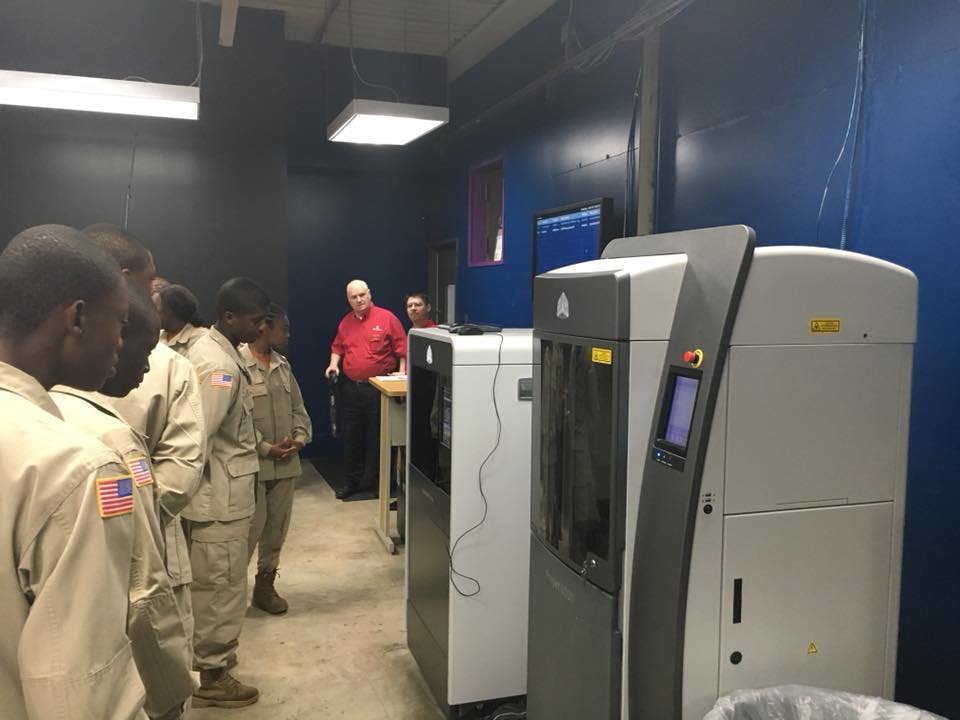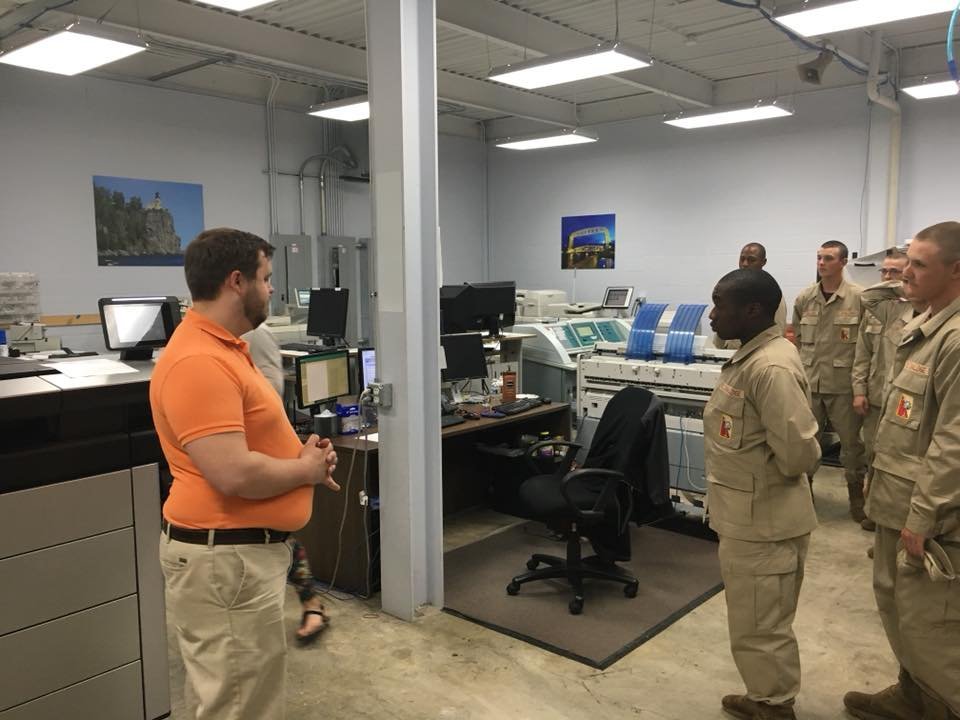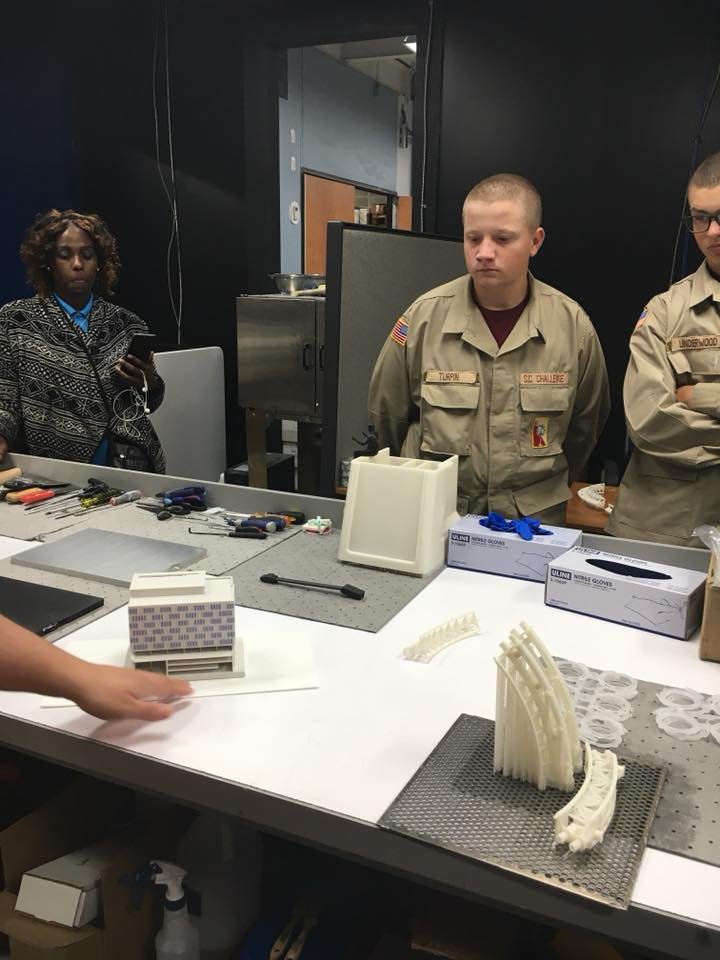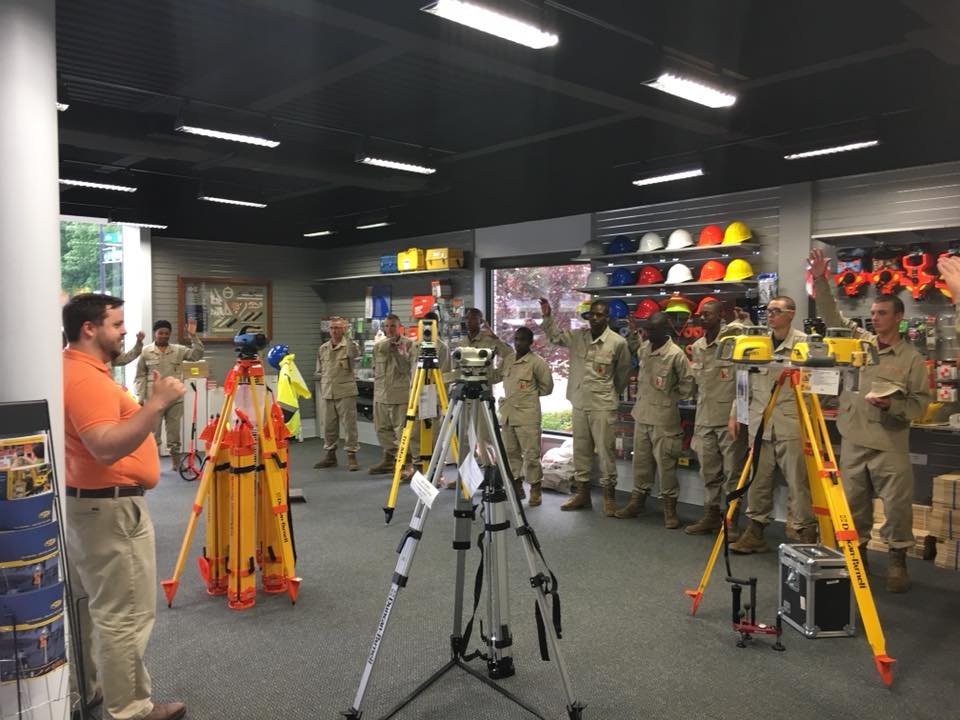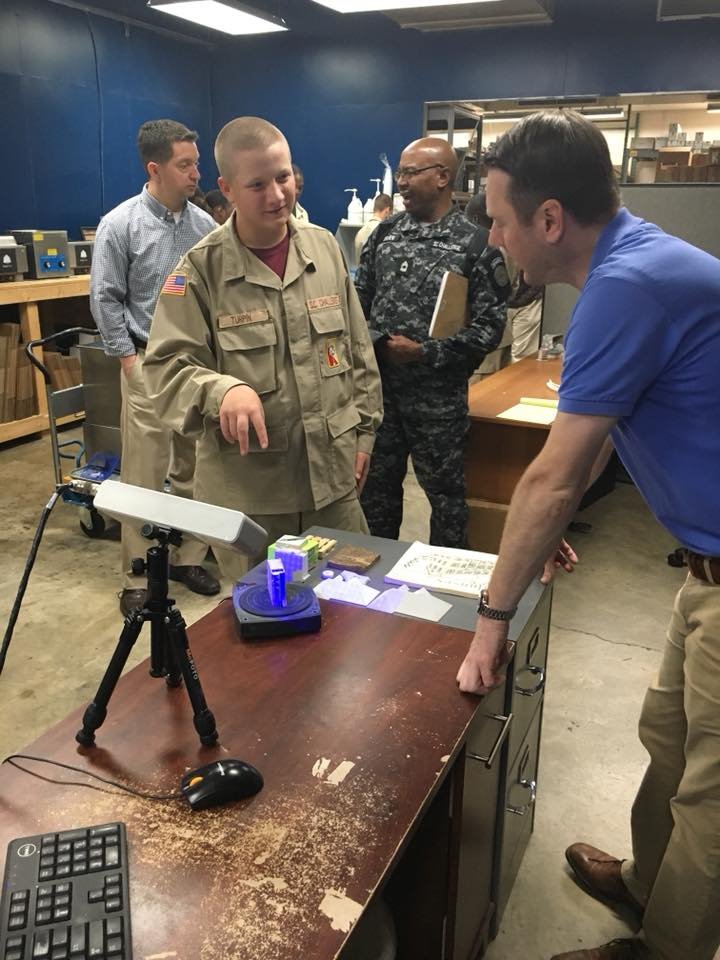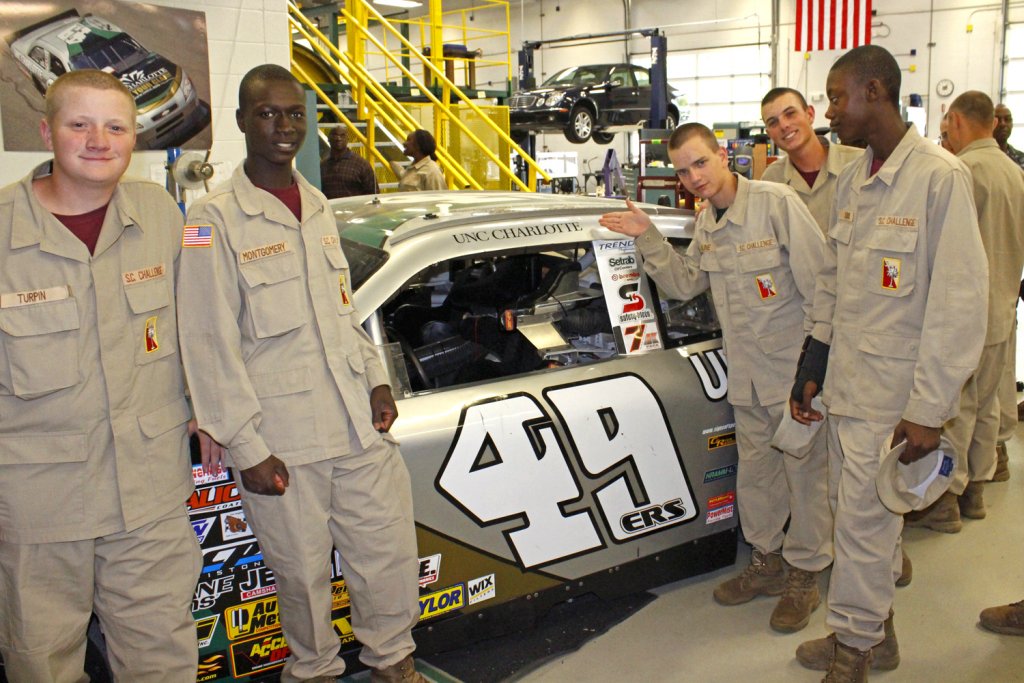We often remind 3D ThinkLink students that the goal of our program isn’t only to teach them about 3D printing. We want them to learn new ways of thinking and be inspired to accomplish things they didn’t think they could do.
That’s why Vocational Orientation is such an important part of the 3D ThinkLink experience. Twice a year, we take students from our 3D classes at the Maryland, South Carolina and the District of Columbia Youth ChalleNGe academies on tours of businesses and schools that use 3D design, scanning and printing.
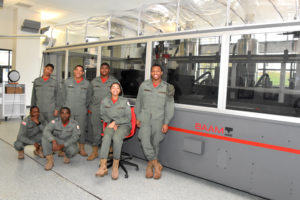
The visits show our students how they can apply their 3D skills in STEM career fields and continued education. In addition, these at-risk youth are literally expanding their minds because exposure to new ideas and experiences stimulates the creation of neural connections in their brains.
There’s no doubt that the brains of cadets from DC’s Capital Guardian Youth ChalleNGe Academy were growing as they toured the Local Motors Heritage Showroom and demonstration facility at National Harbor, Maryland on April 19.
Local Motors Customer Engagement Manager Tracye Johnson guided the students through a tour that included hands-on activities to help them understand the technology and thinking that goes into making Accessible Olli, the company’s 3D-printed, self-driving electric shuttle bus. The vehicle introduced at January’s Consumer Electronics Show in Las Vegas looks like the original Olli, which debuted two years ago, but it’s loaded with high-tech systems to assist disabled passengers.
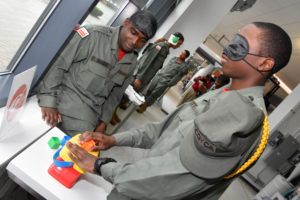
For instance, Accessible Olli can recognize visually impaired riders and use audio to communicate with them. For hearing-impaired people, it has an array of visual displays and can even understand sign language. There are also special features to meet the needs of passengers with mobility problems or cognitive impairments such as dementia.
Local Motors uses a combination of additive and subtractive manufacturing to make its vehicles. The students saw a room-sized version of the 3D printers they use in class called the BAAM (Big Area Additive Manufacturing) machine, which deposits layer after layer of carbon fiber-reinforced ABS plastic to form Olli’s body parts. Next to the BAAM is a giant five-axis milling machine that smooths the rough surfaces of the 3D-printed parts.
The company pioneered this production method with the Strati, the first 3D-printed electric car, in 2014. Two years later, it rolled out a drone-guided version in partnership with Mouser Electronics. The students got to see both vehicles on display in the Heritage Showroom.

Tracye led the cadets through a series of Care Station activities to get them thinking about how people deal with various disabilities and what engineers must consider in designing an autonomous shuttle to serve those customers.
At one station, they had to manipulate a box puzzle toy while blindfolded. At another, students tried to understand what was being said to them while wearing headphones that made hearing impossible. There was an activity to simulate memory problems.
Everyone wanted to try the station demonstrating physical limitations, where they had one of their hands taped up and tried to get the best score in a game of cornhole. Even our Director of Instruction Tom Meeks got into the act, tossing beanbags at the target.
The tour concluded with Tracye introducing the cadets to another project that combines 3D printing and designing devices for the disabled. They assembled 3D-printed pieces to make e-Nable prosthetic hands. Volunteers for the nonprofit organization Enabling the Future use their 3D-printers to create free hands and arms for disabled people around the world.
More Mind-Expanding Vocational Orientation Events
From National Harbor, the Capital Guardian students headed north to College Park to see the University of Maryland’s Terrapin Works 3D printing facilities. Operations Manager Nathanael Carriere showed many different types of printers and explained the various processes each one uses to create 3D objects. The cadets also got a look inside A. James Clark Hall, the UMD Engineering School’s newest building where Terrapin Works has some of its most advanced 3D printers and scanners.
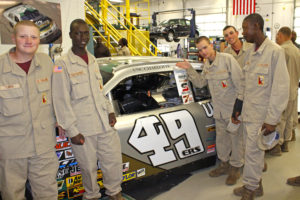
The DC students weren’t the only ones who got to see how 3D design and printing can be used to make vehicles. The class from South Carolina Youth ChalleNGe Academy visited the University of North Carolina at Charlotte on April 26 to see the North Carolina Motorsports and Automotive Research Center.
Dr. Jeff Raquet of the Mechanical Engineering Department led the tour of the facility that’s filled with race cars, engines and the equipment engineers use to make them. The school is just a few miles from the Charlotte Motor Speedway and about 15 percent of all NASCAR engineers are UNCC graduates.
The SCYCA students began their day in Charlotte with a tour of Duncan-Parnell, the winner of our 2016 Community Partner Award, to learn about career opportunities in 3D printer maintenance and support. 3D printing products and services are a big part of the work Duncan-Parnell does with construction companies, architects and engineers. The company also provides service and technical support for the Z450 full-color powder bed printer in the 3D ThinkLink Creativity Lab at our Chantilly, Virginia, headquarters.
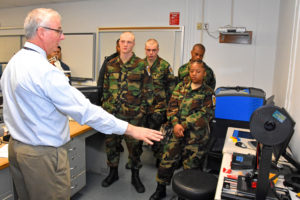
Vocational Orientation for the 3D ThinkLink class from Maryland’s Freestate ChalleNGe Academy featured a visit to Harford Community College on April 17. Professor David Antol showed them projects being done in the school’s 3D printing lab and explained the HCC’s Engineering Technology program, which will soon include a certification in 3D printing.
A favorite Vocational Orientation destination for the Freestate students is The Foundery, an industrial makerspace in Baltimore. And the highlight of the tour is always the demonstration done by blacksmith Sam Salvati. Sam says using a forge, anvil and hammer is the original 3D printing. The Freestate cadets got a workout transforming a bar of steel into a large nail with their initials stamped on it.
This class cycle was the first time our students have been to Local Motors, UNCC and Harford Community College. It won’t be the last. The experiences they gave us made this the best series of Vocational Orientation events we’ve done since we started the 3D ThinkLink Initiative five years ago.
